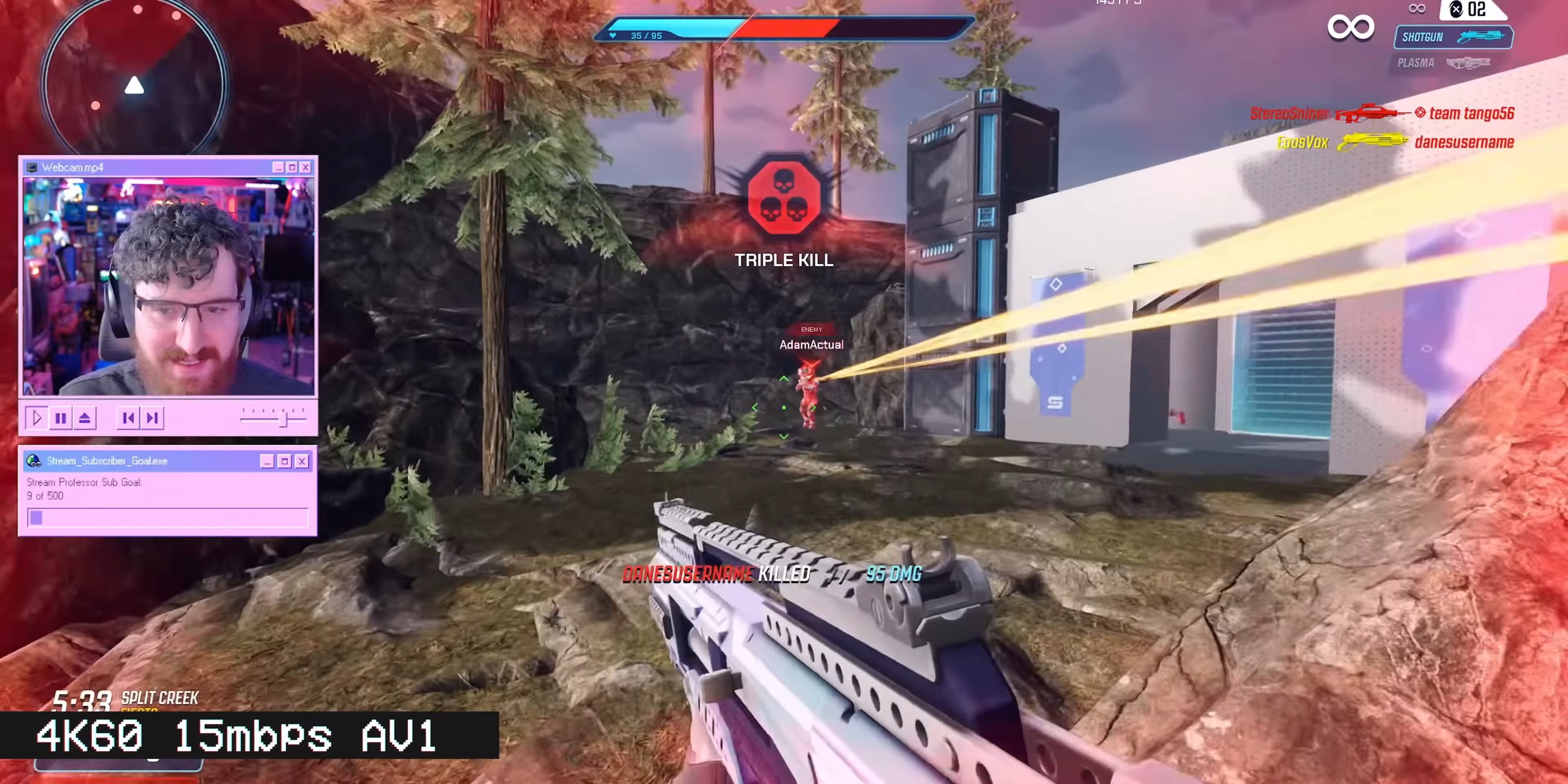
In a recent video, YouTuber EposVox reports that YouTube is finally rolling out AV1 live-streaming support to the platform, with the tech currently in a beta. AV1 will provide YouTube live streams with a substantial increase in video quality, and allow users to stream at up to 4K 60FPS with Twitch-limited bitrates. EposVox was able to get early access to a development build of OBS 29.1 to check out YouTube's live streaming AV1 capabilities.
The newest addition to the AV1 rollout is YouTube live streaming support with AV1. YouTube just rolled out beta support for a new video live-streaming standard known as Enhanced RTMP, which will allow streamers to utilize several of the latest video codecs, including AV1, VP9, and HEVC (H.265) to live stream videos to YouTube.
EposVox was able to test drive Enhanced RTMP, with a development build of OBS 21.9 to stream AV1 gaming content to YouTube directly. According to EposVox, the quality difference is night and day compared to H.264. The quality jump with AV1, allowed him to drive higher quality video to his live stream, and remove pixelation altogether.
Just for perspective on how powerful AV1 is, EposVox was able to run an AV1 1440P 60FPS live stream of Halo Infinite at 500kbps - a bitrate 15x lower than the Twitch limit, and the stream was still perfectly watchable.
For normal use cases, EposVox found that 8mbps was the sweet spot for 1440P 60FPS, and around 15mbps for 1440P 60FPS. For a perfectly good-looking live stream with none or close to no pixelization. For users that still want to stream 1080P video, all you'll need is a 4MBps bitrate to achieve the same result. This is a night and day difference to H.264 where 8Mbps was about the minimum you want for a high-quality 1080P 60FPS video stream, and even in this situation, pixelation is still very likely to occur with a lot of streams.
AV1 represents the biggest jump in video quality and performance in a decade. AV1 is the latest-generation open-source codec, that has garnered massive support from many industry tech giants to supersede older standards such as H.264. The media codec is substantially more capable than H.264, and has the capability of running up to 4K 60FPS streams at similar bitrates to H.264 1080P video.
Development has been slow, with AV1 originally being founded in 2015. But after 5 years of development, AV1 is now in a functional state, with all major GPU manufacturers and several major video platforms already supporting AV1 video playback. YouTube is one of these platforms and already supports AV1 video playback and AV1 uploads. (In fact, Discord already supports limited AV1 live streaming.)

The only side-effect of YouTube's implementation is that videos will still get transcoded to VP9. This means AV1 live streams will be re-coded to YouTube's VP9 codec. VP9 is known to be of slightly lesser quality but it supports far more GPU hardware. Thankfully this isn't a big deal, since transcoding doesn't take away much from AV1's encoding capabilities, and video quality remains exceptionally good.
We don't know exactly when AV1 live streaming will roll out officially across the entire YouTube platform, but it will probably be soon since the roll-out is already in beta. OBS isn't far behind either, with a new version that is being developed right now that will support YouTube's new AV1 live stream standard (Enhanced RTMP).
If you want to get ready for AV1 live streaming support, all you need is either a capable multi-core CPU (for software-based AV1 encoding) or purchase a new RTX 40 series, RX 7000 series, or Intel A-series Arc Alchemist graphics card to live stream AV1 to YouTube in the future.







